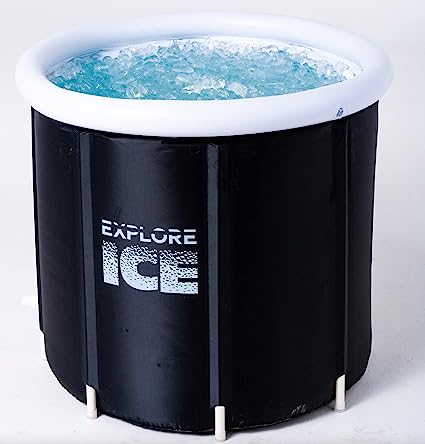Cold shock therapy, also known as cold water immersion, is a method of exposing the body to extremely cold temperatures for short periods of time. The benefits of cold shock therapy are numerous, from improved circulation to reduced inflammation and increased energy. In this comprehensive guide, we’ll explore the science behind cold shock therapy, how to safely practice it, and the potential benefits and risks.
What is Cold Shock Therapy?
Cold shock therapy involves immersing the body in cold water, typically ranging from 50 to 59 degrees Fahrenheit, for a short period of time, usually between 2 to 5 minutes. The cold temperature causes a shock to the body, which triggers a series of physiological responses, such as increased blood flow, reduced inflammation, and improved immune function.
The Science Behind Cold Shock Therapy
When exposed to cold temperatures, the body’s blood vessels constrict, which reduces blood flow to the extremities. This triggers the body’s “fight or flight” response, which releases adrenaline and other stress hormones. These hormones increase heart rate, breathing rate, and blood pressure, which can provide a burst of energy and improve cognitive function.
Additionally, exposure to cold temperatures also triggers the production of brown fat, a type of fat that burns calories to generate heat. This can lead to increased calorie burn and potentially aid in weight loss.
The Potential Benefits of Cold Shock Therapy
Improved Circulation
The constriction and subsequent dilation of blood vessels during cold shock therapy can improve circulation, which can help deliver oxygen and nutrients to the body’s tissues more efficiently.
Reduced Inflammation
Cold shock therapy has been shown to reduce inflammation, which can help alleviate pain and aid in recovery from injury.
Increased Energy
The release of adrenaline and other stress hormones during cold shock therapy can provide a burst of energy and improve cognitive function.
Improved Immune Function
Exposure to cold temperatures has been shown to boost the immune system, potentially improving the body’s ability to fight off infections and diseases.
Potential Weight Loss Aid
The production of brown fat during cold shock therapy may lead to increased calorie burn and potentially aid in weight loss.
How to Safely Practice Cold Shock Therapy
It’s important to approach cold shock therapy with caution, as exposure to cold temperatures can be dangerous if not done properly. Here are some tips for practicing cold shock therapy safely:
Start Slowly
Begin with shorter exposure times and gradually increase the duration as your body becomes more acclimated to the cold temperature.
Don’t Overdo It
Limit exposure to no more than 5 minutes at a time to avoid potential health risks.
Hydrate Before and After
Drinking water before and after cold shock therapy can help prevent dehydration and aid in recovery.
Seek Medical Advice
If you have any pre-existing medical conditions or concerns, it’s important to consult with a medical professional before practicing cold shock therapy.
Risks of Cold Shock Therapy
While cold shock therapy has many potential benefits, there are also risks associated with exposure to cold temperatures. These include:
Hypothermia
Exposure to cold temperatures can cause hypothermia, a condition where the body’s core temperature drops below the normal range. Symptoms of hypothermia include shivering, confusion, slurred speech, and loss of coordination.
Frostbite
Exposure to cold temperatures can also cause frostbite, a condition where the skin and underlying tissues freeze. This can cause permanent damage to the skin and underlying tissues.
Respiratory Issues
Breathing in cold air can cause respiratory issues, such as bronchospasm. This is a condition where the air passages narrow, making it difficult to breathe.
Cold shock therapy can provide many potential benefits, including improved circulation, and reduced inflammation.

